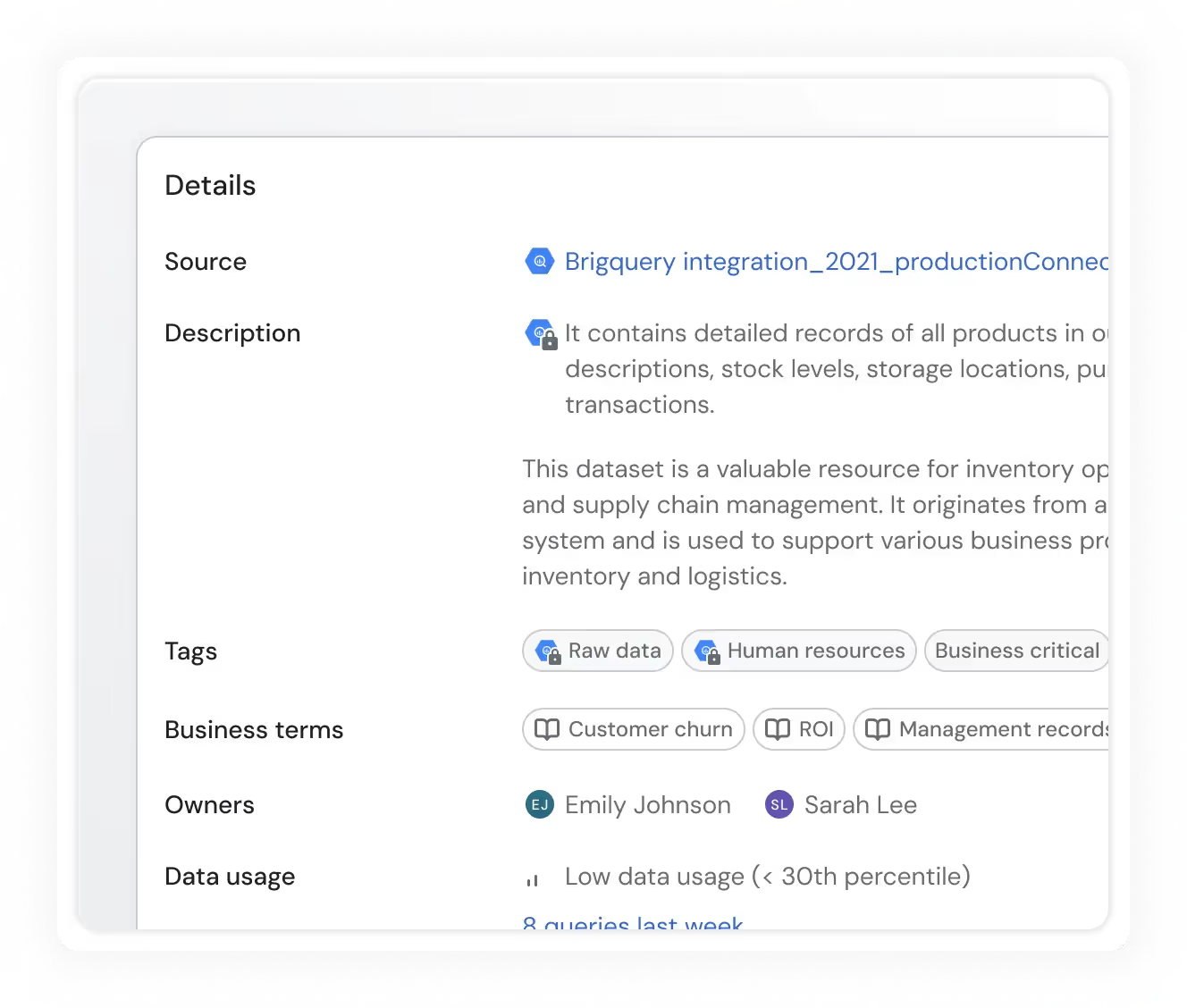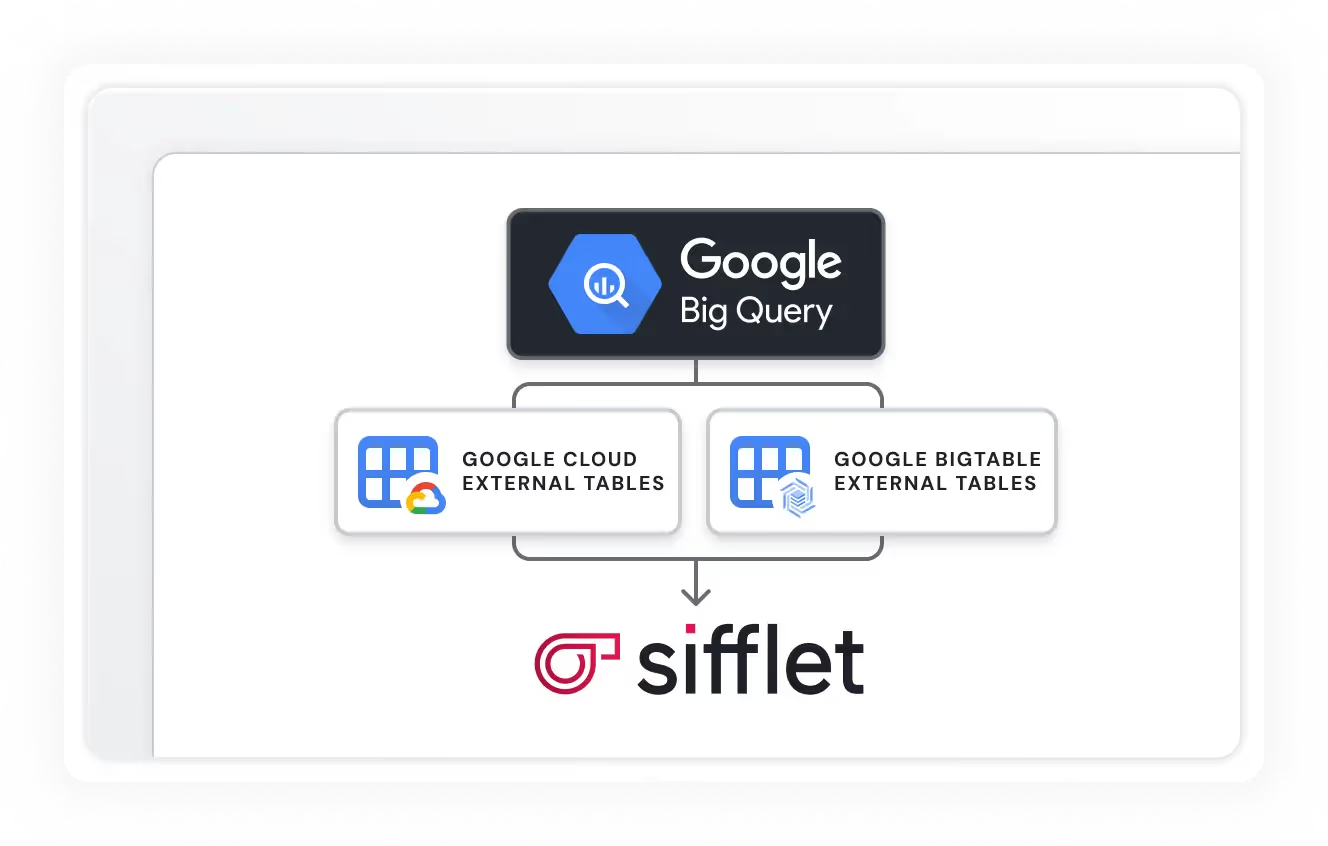
Google BigQuery
Integrate Sifflet with BigQuery to monitor all table types, access field-level lineage, enrich metadata, and gain actionable insights for an optimized data observability strategy.




Metadata-based monitors and optimized queries
Sifflet leverages BigQuery's metadata APIs and relies on optimized queries, ensuring minimal costs and efficient monitor runs.


Usage and BigQuery metadata
Get detailed statistics about the usage of your BigQuery assets, in addition to various metadata (like tags, descriptions, and table sizes) retrieved directly from BigQuery.
Field-level lineage
Have a complete understanding of how data flows through your platform via field-level end-to-end lineage for BigQuery.


External table support
Sifflet can monitor external BigQuery tables to ensure the quality of data in other systems like Google Cloud BigTable and Google Cloud Storage














Still have a question in mind ?
Contact Us
Frequently asked questions
What is data observability, and why is it important for companies like Hypebeast?
Data observability is the ability to understand the health, reliability, and quality of data across your ecosystem. For a data-driven company like Hypebeast, it helps ensure that insights are accurate and trustworthy, enabling better decision-making across teams.
How does Sifflet support data documentation in Airflow?
Sifflet centralizes documentation for all your data assets, including DAGs, models, and dashboards. This makes it easier for teams to search, explore dependencies, and maintain strong data governance practices.
How does Sifflet help identify performance bottlenecks in dbt models?
Sifflet's dbt runs tab offers deep insights into model execution, cost, and runtime, making it easy to spot inefficiencies. You can also use historical performance data to set up custom dashboards and proactive monitors. This helps with capacity planning and ensures your data pipelines stay optimized and cost-effective.
How did jobvalley improve data visibility across their teams?
jobvalley enhanced data visibility by implementing Sifflet’s observability platform, which included a powerful data catalog. This centralized hub made it easier for teams to discover and access the data they needed, fostering better collaboration and transparency across departments.
How does Etam ensure pipeline health while scaling its data operations?
Etam uses observability tools like Sifflet to maintain a healthy data pipeline. By continuously monitoring real-time metrics and setting up proactive alerts, they can catch issues early and ensure their data remains trustworthy as they scale operations.
Why is data observability so important for AI and analytics initiatives?
Great question! Data observability ensures that the data fueling AI and analytics is reliable, accurate, and fresh. At Sifflet, we see data observability as both a technical and business challenge, which is why our platform focuses on data quality monitoring, anomaly detection, and real-time metrics to help enterprises make confident, data-driven decisions.
How does Sifflet help reduce AI bias and improve model fairness?
Reducing AI bias starts with understanding your data. Sifflet’s observability platform gives you deep visibility into data sources, transformations, and quality. By tracking data lineage and applying data profiling, teams can identify and correct biased inputs before they affect model outcomes. This transparency helps build more ethical and reliable AI systems.
Can Sifflet help me trace how data moves through my pipelines?
Absolutely! Sifflet’s data lineage tracking gives you a clear view of how data flows and transforms across your systems. This level of transparency is crucial for root cause analysis and ensuring data governance standards are met.





















-p-500.png)
